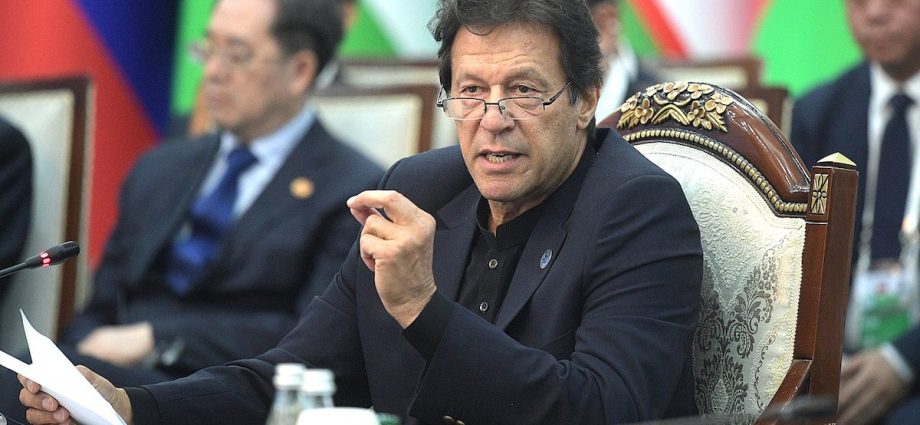
This is an election year in Pakistan, and while it’s unclear whether the polls will be held as planned, Pakistanis are already voting with their feet.
This month’s tragic drowning of more than 200 Pakistani migrants in a boat that capsized off the coast of Greece reflects the growing and often deadly exodus from the country.
Frontex, the European Union’s border and coast-guard agency, reports that the number of illegal EU border-crossing attempts by Pakistani nationals more than doubled to 4,684 during the first four months of this year compared with the same period in 2022.
The reasons Pakistanis are choosing to make this perilous journey are many, but primarily economic. The chief driver of Pakistani emigration, according to a 2020 survey by the International Organization for Migration, is the absence of good jobs at home.
Given the poor labor environment, Pakistani families save the 2.2 million rupees (about US$7,700) needed to traffic a young, able-bodied male to Europe so he can earn for the household. As stubborn double-digit inflation – it currently hovers at nearly 40% – eats into the purchasing power of Pakistani households, foreign-currency earnings have even greater value.
Pakistani irregular migration into Europe by sea is not a new phenomenon. An initial surge began in late 2010 as terror attacks rose in the country and the economy floundered. Years later, attempts to reach Europe and even Australia rose once again. This wave of migrants included Shiites fleeing surging sectarian violence.
The Australian government stuck to its zero-tolerance policy toward irregular migration, posting ads in Pakistani newspapers with an uninviting message in large red text: “No Way. You Will Not Make Australia Home.”
In contrast, Pakistan’s leaders have largely responded to this dangerous exodus with indifference or derision. In 2012, when asked by CNN why so many Pakistanis wanted to leave their country, then-prime minister Yusuf Raza Gilani replied: “And why don’t they leave then? Who is stopping them?”
Just days before the most recent tragedy, Defense Minister Khawaja Muhammad Asif ridiculed Pakistani expatriates as people who “abandon” their country and only return home to bury their elders and sell their inherited property.
Pakistan has long harbored known human-trafficking networks, including in the central cities of Gujrat and Gujranwala. These networks thrive in part thanks to an enabling environment created by the government, which either pays a blind eye or colludes with them.
Top export is its own people
A former official with Pakistan’s top law-enforcement agency recently alleged that some “black sheep” within the organization’s ranks protect human-trafficking networks. The quick arrests by Pakistani law enforcement of traffickers tied to the Greek tragedy likely reflect that these individuals were already known to the government.
Since the 1970s, the Pakistani government has actively promoted legal labor emigration, including to the Persian Gulf region. As prominent Pakistani economist Nadeem ul Haque has said, for the past two to three decades, Pakistan’s largest export has been its people.
Pakistan suffers from a low export base. Its rent-seeking industrial elite profit from protectionist policies at home and have little incentive to compete in the global market. As a result of its consumption-led growth strategies, Pakistan faces recurring balance-of-payments crises.
Remittances sent home by Pakistan’s economic migrants – including those who survive the dangerous sea route – provide vital foreign exchange and, in effect, subsidize the consumption of the Pakistani elite.
The growing flight of Pakistanis abroad now extends beyond poor, irregular migrants. With an economy stuck in stagflation and a paucity of good jobs, more and more Pakistanis of all economic backgrounds are leaving the country.
Like many developing countries, Pakistan has suffered from a brain drain for decades. But this trend is now intensifying. Skilled economic migrants make up a growing percentage of Pakistanis leaving the country, rising from 1.2% in 2011 to 6.5% niw. Alongside the desperately poor, those of means or with advanced degrees are choosing to leave the country in greater numbers.
According to a 2022 survey, a majority of Pakistani males between the ages of 14 and 34 want to leave the country. What is particularly striking is that these sentiments are highest among the most educated and the upper middle class.
This signals a broader disenchantment with the status quo as Pakistan’s “polycrisis” – the confluence of economic, political, and security challenges stemming from the ouster of prime minister Imran Khan last year – continues.
Such countries as Canada will benefit from the influx of skilled labor and migrants with capital. These immigrants will build happy and productive lives in a functional, democratic, and meritocratic society with a clear path for upward mobility.
But irregular migration to the EU will bring difficulties for both new arrivals and their receiving countries. Yet this trend will likely continue for as long as Pakistan’s internal unrest continues to simmer.
The tumult in Pakistan is having ramifications far beyond the country’s shores. Given its fast-growing population – it is forecast to grow from 220 million now to 336 million by 2050 – the developed world cannot afford to ignore Pakistan’s economic and political plight.
Stability in Pakistan is key to the interests of its neighbors and Europe. To ensure it, the country must find a path toward sustainable, equitable economic growth, and a political environment in which fundamental rights are protected.
This article was provided by Syndication Bureau, which holds copyright.

